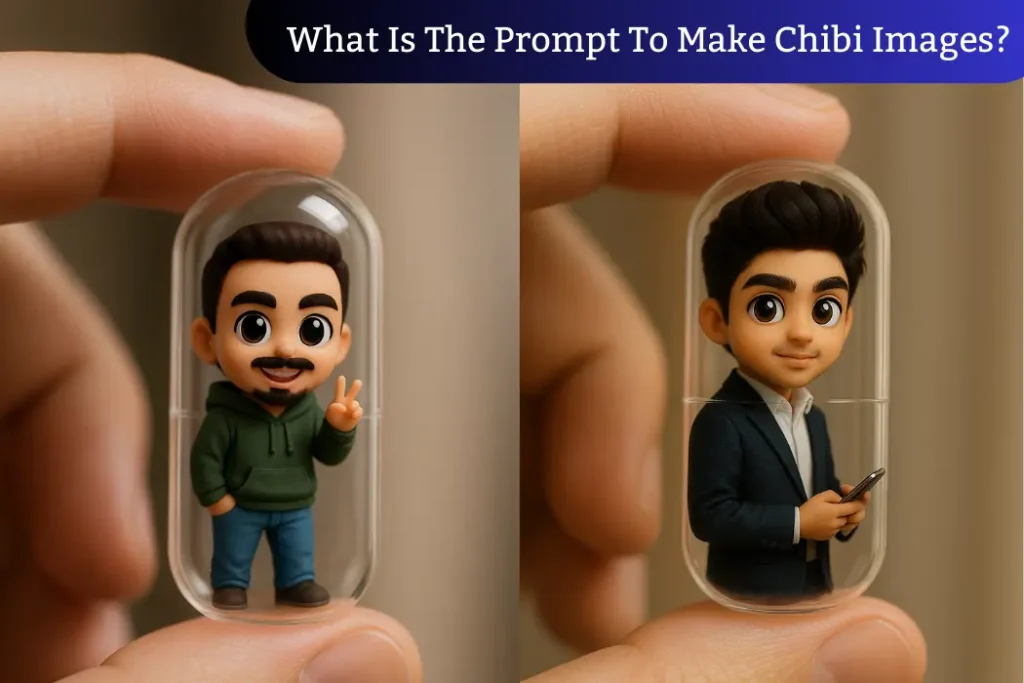Chibi images have taken the digital art world by storm, captivating artists and fans with their adorable, exaggerated features and playful charm. If you’re wondering how to create stunning Chibi-style artwork using AI tools, the key lies in crafting the perfect prompt. A well-written prompt can guide AI to produce high-quality, unique Chibi images that stand out.
What Are Chibi Images?
Chibi is a Japanese term meaning “short” or “small,” often used to describe a style of drawing characters with oversized heads, large expressive eyes, and tiny bodies. This art style emphasizes cuteness and personality, making it popular in anime, manga, and digital art communities.
Chibi characters are versatile, appearing in fan art, merchandise, and even AI-generated creations. Whether you’re an artist or a beginner, AI tools like MidJourney, DALL-E, or Stable Diffusion can help you create Chibi images by using detailed prompts.
Why Use Prompts for Chibi Images?
Prompts are the instructions you give to an AI image-generation tool to create a specific output. A good prompt ensures the AI understands your vision, resulting in images that match your expectations. For Chibi images, prompts need to balance creativity and precision.
They should describe the character’s appearance, pose, clothing, and environment while incorporating the distinct Chibi style. By mastering prompt creation, you can produce unique, high-quality Chibi artwork that resonates with viewers and ranks well on search engines.
Read This: What Is The Prompt to Create Action Figure Images?
Key Elements of a Chibi Image Prompt
To create an effective Chibi image prompt, include these essential components:
- Art Style: Specify “Chibi” to ensure the AI uses the characteristic large eyes, small body, and cute aesthetic.
- Character Details: Describe the character’s gender, hair color, eye color, and facial expression.
- Clothing and Accessories: Mention outfits, such as casual, fantasy, or themed clothing, and any accessories like hats or jewelry.
- Pose and Expression: Include dynamic poses (e.g., waving, jumping) or expressive gestures (e.g., winking, smiling).
- Background and Lighting: Add a setting (e.g., blurred park, cozy room) and lighting style (e.g., soft, vibrant) to enhance the image.
- Additional Instructions: Specify the image’s perspective, resolution, or any unique elements like a transparent capsule or 3D effect.
By combining these elements, your prompt will guide the AI to produce a visually appealing and SEO-friendly Chibi image.
How To Write A Chibi Image Prompt
Creating an SEO-friendly prompt doesn’t just help the AI—it also ensures your content ranks well on search engines. Here’s how to make your Chibi prompt optimized for SEO:
- Use Relevant Keywords: Include terms like “Chibi art,” “AI-generated Chibi,” “Chibi image prompt,” and “create Chibi characters” naturally in your prompt and content.
- Be Specific Yet Simple: Use clear, simple language to describe your vision. Avoid jargon to make the content accessible.
- Incorporate Long-Tail Keywords: Phrases like “how to make Chibi images with AI” or “best Chibi art prompts” attract targeted traffic.
- Add Descriptive Adjectives: Words like “adorable,” “vibrant,” or “playful” make the prompt engaging and help with SEO.
- Structure for Readability: Break the prompt into short sentences or phrases for clarity, which also improves user experience.
Sample Chibi Image Prompt
Here’s a unique, detailed prompt to create a captivating Chibi image:
Prompt: Create a realistic, portrait-style close-up of a transparent glass capsule held gently between two fingers. Inside the capsule, place a full-body, detailed 3D Chibi-style figure of a person from the uploaded photo. The Chibi should have expressive features, large sparkling eyes, and a small body. Dress them in casual clothes like jeans and a hoodie, with a playful pose like waving or making a peace sign. Use soft lighting and a blurred background to highlight the capsule.
Tips for Customizing Your Chibi Prompt
Want to make your Chibi images even more unique? Try these customization tips:
- Experiment with Themes: Create Chibi characters in fantasy settings (e.g., a wizard with a starry robe) or modern outfits (e.g., a skateboarder in streetwear).
- Add Emotion: Specify emotions like “cheerful,” “mischievous,” or “dreamy” to give your Chibi personality.
- Incorporate Props: Include items like a tiny book, a cupcake, or a pet to add charm.
- Vary Backgrounds: Use settings like a magical forest, a cozy cafe, or a futuristic city to set the mood.
- Test Different AI Tools: Each AI platform interprets prompts slightly differently. Experiment with MidJourney, Stable Diffusion, or DALL-E to find the best fit.
By tweaking these elements, you can create endless variations of Chibi images that feel fresh and engaging.
Common Mistakes to Avoid in Chibi Prompts
While crafting a Chibi prompt, watch out for these pitfalls:
- Vague Descriptions: Saying “a cute character” is too broad. Specify details like “a Chibi girl with pink pigtails and a sunny smile.”
- Overloading Details: Too many instructions can confuse the AI. Focus on key elements like style, pose, and background.
- Ignoring SEO: If you’re sharing your Chibi art online, include keywords in your prompt description to boost visibility.
- Copying Prompts: Using someone else’s prompt verbatim risks plagiarism and reduces uniqueness. Always create original prompts.
How to Use Chibi Images for SEO and Engagement
Once you’ve created your Chibi images, leverage them to boost your website or social media presence:
- Optimize Image Files: Use descriptive file names like “Chibi-girl-in-capsule.png” and add alt text like “AI-generated Chibi art in a glass capsule.”
- Share on Social Media: Post your Chibi images on platforms like Instagram or Pinterest with hashtags like #ChibiArt, #AIArt, and #ChibiCharacters.
- Create Blog Content: Write articles like “Top 10 Chibi Art Prompts for Beginners” to attract readers and link to your images.
- Engage Your Audience: Ask followers to suggest Chibi themes or vote on their favorite designs to increase interaction.
These strategies help your Chibi images rank higher on search engines and attract more clicks.
Why Chibi Art Is Perfect for Digital Content
Chibi art’s universal appeal makes it ideal for digital content creators. Its cute aesthetic draws in audiences of all ages, while its versatility allows it to fit various niches, from gaming to fashion.
AI-generated Chibi images are also cost-effective, letting you produce high-quality visuals without hiring an artist.
By using well-crafted prompts, you can create unique Chibi characters that enhance your brand and engage your audience.
Read This: How To Make Studio Ghibli-Style Images Free
Final Thoughts on Crafting Chibi Image Prompts
Creating Chibi images with AI is a fun and rewarding process, but it all starts with a great prompt. By including specific details, using simple language, and incorporating SEO-friendly keywords, you can produce adorable Chibi characters that captivate viewers and rank well online.
Ready to start? Use the sample prompt above or experiment with your own ideas. With practice, you’ll master the art of Chibi prompts and create images that shine in the digital world. Happy creating!






